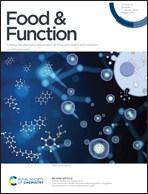Targeting AMPK signaling by polyphenols: a novel strategy for tackling aging
Abstract
Aging is an inevitable biological process and is accompanied by a gradual decline of physiological functions, such as the incidence of age-related diseases. Aging becomes a major burden and challenge for society to prevent or delay the occurrence and development of these age-related diseases. AMPK is a key regulator of intracellular energy and participates in the adaptation of calorie restriction. It is also an important mediator of nutritionally sensitive pathways that regulate the biological effects of nutrient active ingredients. AMPK can limit proliferation and activate autophagy. Recent studies have shown that nutritional intervention can delay aging and lessen age-related diseases in many animal and even human models. Polyphenols function as a natural antidote and are important anti-inflammatory and antioxidant agents in human diets. Polyphenols can prevent age-related diseases because they regulate complex networks of cellular processes such as oxidative damage, inflammation, cellular aging, and autophagy, and have also attracted wide attention as a potential beneficial substance for longevity. In this review, we systemically summarized the progress of targeting AMPK signaling by dietary polyphenols in aging prevention. Polyphenols can reduce oxidative stress and inflammatory response, and maintain the steady state of energy. Polyphenols can also modulate sirtuins/NAD+, nutrient-sensing, proteostasis, mitochondrial function, autophagy and senescence via targeting AMPK signaling. Therefore, targeting the AMPK signaling pathway by dietary polyphenols may be a novel anti-aging strategy.

- This article is part of the themed collection: Food & Function Review Articles 2023


 Please wait while we load your content...
Please wait while we load your content...